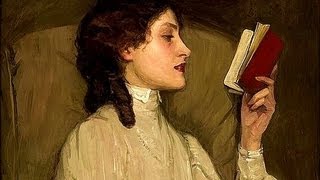Importance Of Reading At University Level
Why Read: The Importance of the Liberal Arts – Literature Against Philosophy (2004)
The liberal arts (Latin: artes liberales) are those subjects or skills that in classical antiquity were considered essential for a free person (a citizen) to know in order to take an active part in civic life. In Ancient Greece this included participating in public debate, defending oneself in court, serving on juries, and most importantly, military service (slaves and resident aliens were by definition excluded from the duties and responsibilities of citizenship). The aim of these studies was to produce a virtuous, knowledgeable, and articulate person. Grammar, rhetoric, and logic were the core liberal arts. During medieval times, when learning came under the purview of the Church, these subjects (called the Trivium) were extended to include arithmetic, geometry, music, and astronomy (which included the study of astrology). This extended curriculum was called the Quadrivium. Together the Trivium and Quadrivium constituted the seven liberal arts of the medieval university curriculum. In the Renaissance, the Italian humanists, who in many respects continued the grammatical and rhetorical traditions of the Middle Ages, rechristened the old Trivium with a new and more ambitious name: Studia humanitatis, and also increased its scope. They excluded logic and added to the traditional Latin grammar and rhetoric not only history, Greek, and moral philosophy (ethics), but made poetry, once a sequel of grammar and rhetoric, the most important member of the whole group. The educational curriculum of humanism spread throughout Europe during the sixteenth century and became the educational foundation for the schooling of European elites, the functionaries of political administration, the clergy of the various legally recognized churches, and the learned professions of law and medicine. The ideal of a liberal arts, or humanistic education grounded in classical languages and literature, persisted until the middle of the twentieth century.
In modern times liberal arts education is a term which can be interpreted in different ways. It can refer to certain areas of literature, languages, philosophy, history, mathematics, psychology, and science. It can also refer to studies on a liberal arts degree program. For example, Harvard University offers a Master of Liberal Arts degree, which covers biological and social sciences as well as the humanities. For both interpretations, the term generally refers to matters not relating to the professional, vocational, or technical curricula.
In the United States, liberal arts colleges are schools emphasizing undergraduate study in the liberal arts. Traditionally earned over four years of full-time study some universities such as Saint Leo University, Pennsylvania State University, Florida Institute of Technology and New England College have begun to offer an associate degree in liberal arts, most students earn either a Bachelor of Arts degree or a Bachelor of Science degree; on completing undergraduate study, students might progress to either a graduate school or a professional school (public administration, engineering, business, law, medicine, theology). The teaching is Socratic, typically with small classes, and often has a lower student-to-teacher ratio than at large universities; professors teaching classes are allowed to concentrate more on their teaching responsibilities than primary research professors or graduate student teaching assistants, in contrast to the instruction common in universities.
http://en.wikipedia.org/wiki/Liberal_arts
